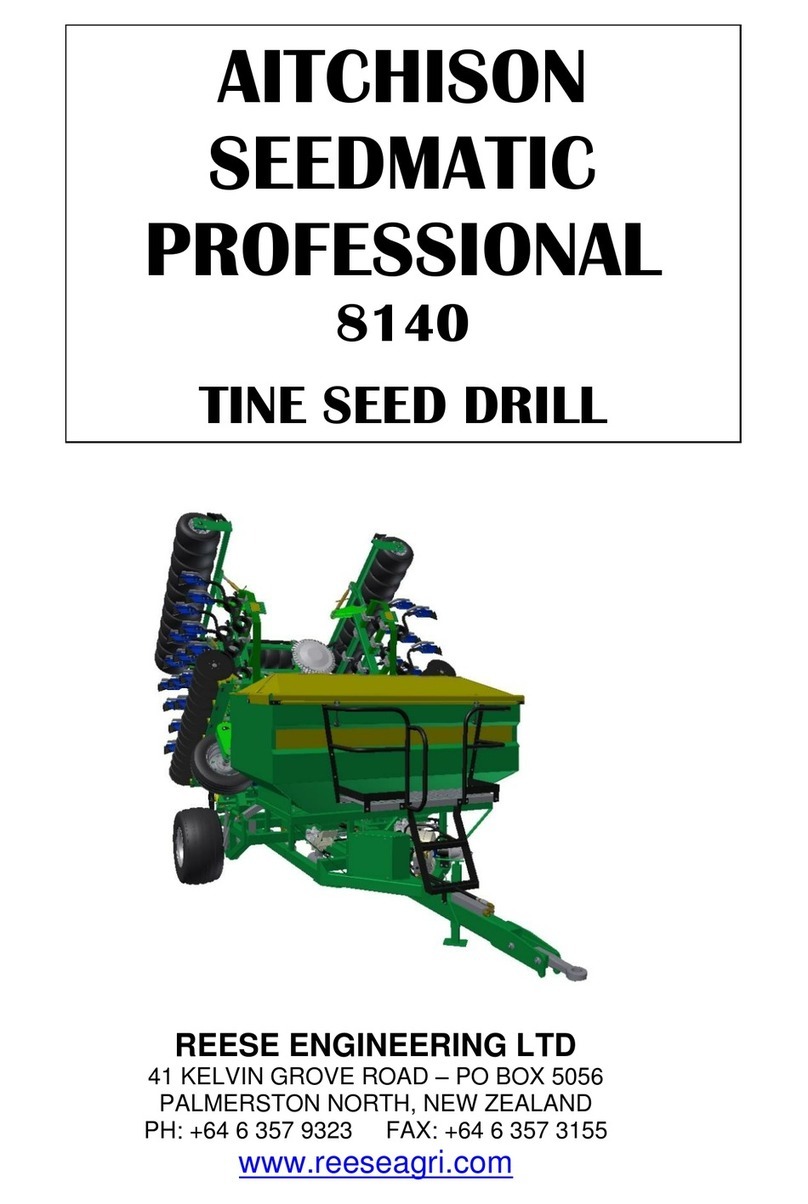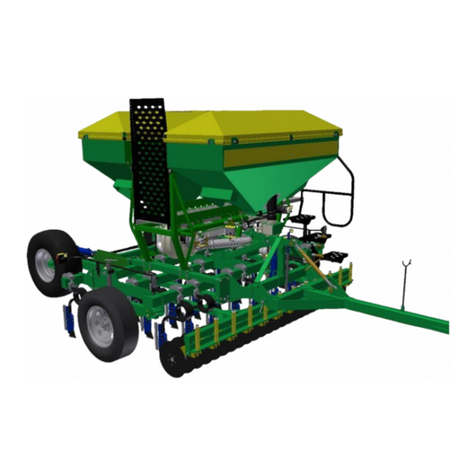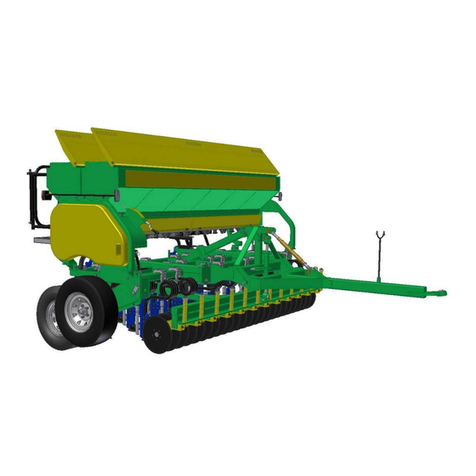
GENERAL OPERATION IN THE FIELD
The drill should always be moving forward when lowered or raised from work.
Avoid stopping and never reverse with drill in work. These precautions will avoid
blocking outlets; however make periodic checks for blockages while drilling.
The speed of travel is governed by the conditions e.g. if the ground is rough the drill
may tend to bounce which would necessitate a lower speed. In optimum conditions
12 km/h may be maintained.
Always lift the drill out of the ground before turning sharp corners as this will protect
the disc openers and stop the turf from ripping.
Under no circumstances should the tractor wheels be allowed to slip excessively as
this will break the turf and the following disc may tear up the ground. If slippage is a
problem, use a tractor with more traction or wait for the ground to be in better
condition. Towing chain or bar harrows behind the drill is very beneficial as this will
crumble the groove and help to cover the seed.
PASTURELAND FARMING WITH THE AIRPRO SK2122
Continuous reaping of grasses either by machine or animal will eventually lead to
their degeneration. Desired species of grasses and legumes will weaken and their
ability to survive adverse climatic conditions will be diminished. Undesirable species
of grasses and weeds will eventually tend to dominate or pasture may simply thin out
with minimal plant populations. Of course conditions that cause pasture
degenerations vary from location to location, and from country to country, but one
can assume that every pasture can be improved no matter where its location.
MANAGEMENT CONSIDERATIONS
In describing the technique for sowing seeds into uncultivated soils, we should clarify
the terminology. It is most common to refer to CONSERVATION TILLAGE (or CT)
but it may be called SOD-SEEDING in Australia, or DIRECT DRILLING in UK or
even NO-TILL SEEDING in North America. Wherever it is practical, successful
conservation tillage requires well considered and thorough preparation, integrated
with a whole farm management program.
The cropping rotation, optimum sowing dates and grazing fertilization program will
depend on the seasonal vegetation or weed spectrum, paddock history, soil type,
fertility and drainage, and many other factors.
Here is a checklist that should be followed for any CT program (courtesy of Monsanto
NZ Ltd):
1. Check that the soil pH is around 6.0.
2. Check soil fertility levels for fertiliser requirement.
3. 3. E Establish optimum time for planting.
4. Check and control weeks present, before and during crop establishment.
5. Check and control insect and slug infestation before and during plant
establishment.
6. Check and control insect and slug infestation before and during plant
establishment.
7. Ensure soil conditions are suitable for drilling.
8. Inspect the crop regularly after planting.
8






























